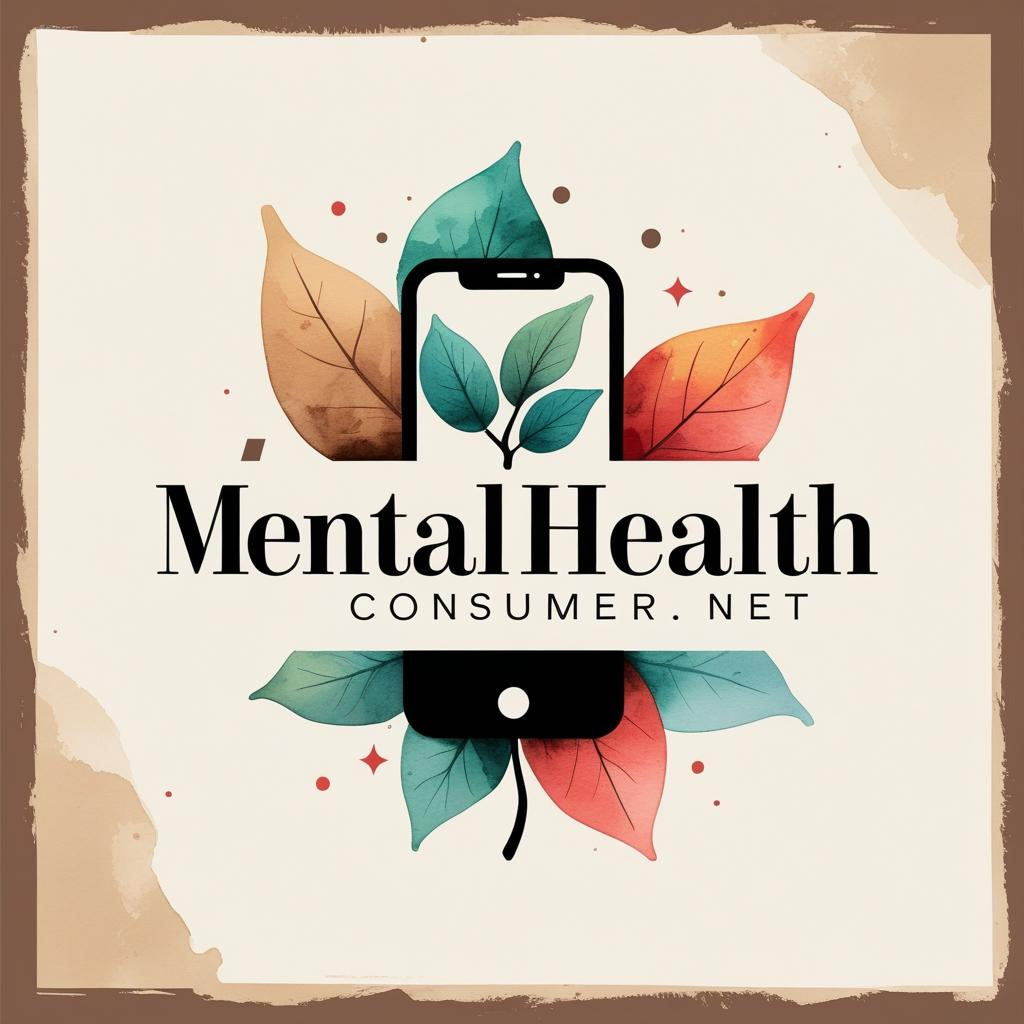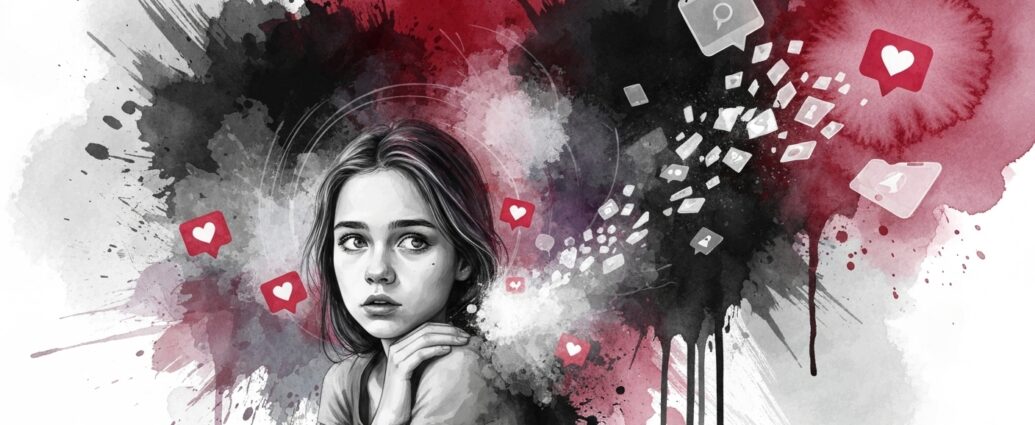Last Tuesday night, I scrolled through 47 Instagram stories, double-tapped 23 posts, and sent a dozen fire emojis to friends. By the time I set my phone down, I felt more alone than when I’d picked it up. You know that specific hollow feeling, right? Surrounded by hundreds of connections but craving one real conversation.
Here’s what nobody talks about: digital connection isn’t the enemy of genuine relationships. The problem is how we’re using it. Research from Pew Research Center shows that 72% of adults feel less connected to close friends despite spending three hours daily on social platforms. We’ve confused commenting with connecting, liking with loving, and constant availability with actual presence.
But there’s a better way forward. You can use your phone to strengthen real relationships instead of replacing them. This isn’t about going offline completely or deleting every app. It’s about intentional choices that create space for the genuine connection your brain actually needs. Small shifts in how you text, call, and engage online can reduce loneliness and rebuild the authentic relationships that matter most.
What Digital Connection Actually Means for Your Wellbeing
Let’s start with what researchers have learned about quality versus quantity in our digital lives. A 2023 study published by the American Psychological Association tracked 3,400 adults and found something striking: people with 200+ social media connections reported higher loneliness scores than those with 50 connections who engaged more deeply.
The difference comes down to what psychologists call “meaningful interaction.” When you send a thoughtful voice message instead of a thumbs-up emoji, your brain releases oxytocin, the same bonding hormone triggered by in-person conversation. When you video call a friend and actually see their facial expressions, your mirror neurons activate, creating empathy and understanding. These biological responses don’t happen with passive scrolling or quick reactions.
Your smartphone can facilitate genuine connection, but only when you use it as a bridge to deeper engagement rather than a replacement for it. Think about the last time you felt truly connected to someone through your phone. Probably wasn’t when you liked their vacation photo. More likely it was a long voice note, a vulnerable text thread, or a video call where you both laughed until you cried.
Here’s the contrarian insight: the people who report the strongest relationships while using social media heavily aren’t the ones with the most followers or likes. They’re the ones who use platforms strategically to maintain and deepen existing close relationships rather than broadcasting to audiences or collecting superficial connections. Quality of engagement beats quantity every single time.
According to research on social isolation trends, what matters isn’t screen time itself but whether that time facilitates real intimacy or substitutes for it. The loneliest people aren’t necessarily the ones online most; they’re the ones whose online behavior prevents offline depth.
💡¡ Pro Tip: Track one week of your digital interactions and mark which ones left you feeling more connected versus more isolated. That data reveals where to invest your attention.
The Loneliness Paradox: Why More Connections Feel Like Less
You’ve probably experienced this: you’re part of multiple group chats, you follow hundreds of people, your phone buzzes constantly with notifications, yet you feel profoundly alone. This isn’t coincidence or personal failure. It’s the predictable outcome of how most of us currently use technology.
When I finally admitted I felt lonely despite my “connected” life, I started paying attention to what actually filled my social needs versus what just filled time. Turns out, sending 30 quick messages to acquaintances felt productive but left me empty. One 20-minute phone call with my sister where we talked about real stuff, our fears and hopes and daily struggles, that actually satisfied the craving for connection.
Research from the National Institutes of Health found that people who primarily communicate through brief text messages and social media reactions report 47% higher rates of feeling misunderstood by close friends compared to those who regularly use richer communication methods like calls or video chats. Your brain needs context, tone, and real-time responsiveness to feel truly seen and heard.
The comparison trap intensifies this loneliness. When you’re watching everyone else’s highlight reels, you’re not just feeling inadequate about your life, you’re feeling excluded from connections that appear more fun, more authentic, more effortless than yours. But here’s what you’re not seeing: those people often feel just as disconnected as you do. They’re curating connection, not living it.
Another factor is what researchers call “phubbing,” where someone is physically present but mentally absorbed in their phone. When your partner sits next to you scrolling instead of talking, or your friend checks notifications during dinner, the message received is clear: whatever’s on that screen matters more than this moment with you. Do that enough times and even close relationships start feeling distant.
💡Pro Tip: Notice how you feel after different types of digital interaction. Drained and lonely after scrolling? Energized after a real conversation? Your body knows the difference even when your habits dont.
A Step-by-Step Plan to Cultivate Genuine Digital Connection
Here’s a practical approach that doesn’t require deleting apps or going offline, just using technology more intentionally to serve real relationships.
Step 1: Identify Your Core Circle (Week 1)
List 5-10 people whose relationships genuinely matter to you and whom you want to feel closer to. These aren’t necessarily your most frequent contacts. They’re the people whose wellbeing you care about and who you’d call in a crisis. Write their names down.
Step 2: Audit Your Current Contact Patterns (Week 1)
For each person on your list, review your last five interactions. Were they mostly likes and brief comments, or substantive exchanges? Did you initiate meaningful contact or just respond superficially? No judgment, just data collection about current patterns.
Step 3: Establish Weekly Connection Rituals (Week 2-3)
Schedule one deeper interaction weekly with someone from your core circle. Not a text checking in. A 15-minute phone call, a video chat over coffee, or a voice message longer than two minutes sharing something real. Put these in your calendar like any other important appointment. This builds genuine connection through consistent, quality engagement.
Step 4: Use the REAL Framework for Digital Interactions (Ongoing)
Before engaging digitally, ask: Is this interaction Responsive (addressing what they actually shared), Engaged (requires my full attention), Authentic (honest about my real thoughts/feelings), or Lazy (just checking a social obligation box)? If it’s lazy, either invest more effort or skip it entirely. Half-hearted engagement is worse than none.
Step 5: Create Phone-Free Presence Zones (Week 3-4)
When you’re physically with people you care about, put your phone completely away. Not face-down on the table, actually in another room or your bag. Full presence during meals, conversations, and activities signals that this person matters more than whatever might be happening in your pocket. Use iOS Focus Modes or Android’s Do Not Disturb to block everything except true emergencies during these times.
Step 6: Replace Passive Scrolling with Active Reaching Out (Week 4 and beyond)
When you catch yourself opening Instagram or Facebook out of habit, close it and text or call someone specific instead. Even a brief “thinking of you, hope your week is going well” text to a specific person creates more connection than 20 minutes of scrolling. This habit rewiring takes about six weeks to feel automatic.
💡Pro Tip: Start with just two people from your core circle for the first month. Trying to deepen all relationships simultaneously usually leads to burnout and abandoning the whole effort.
Tools and Settings That Support Real Connection
Your phone has features specifically designed to help you be more present with the people around you and more intentional about digital engagement. Most people never use them.
Focus Modes and Contextual Settings
iOS Focus Modes let you customize which notifications come through based on what you’re doing. Create a “Quality Time” focus that only allows calls and texts from your core circle while blocking all social media and email. Apple’s Focus documentation walks through setup. Android’s Do Not Disturb offers similar capabilities with custom exception lists.
The key is using these proactively. Activate them before dinner with family, during one-on-one time with friends, or during your evening wind-down. After 8 weeks of using focus modes consistently, one survey found that 68% of people reported improved relationship satisfaction with household members.
Communication Apps That Encourage Depth
Marco Polo (free with premium options) facilitates asynchronous video messages, creating richer communication than texting without requiring simultaneous availability. It’s particularly useful for maintaining close friendships across time zones or busy schedules.
Voxer (free with premium at $3.99/month) enables walkie-talkie style voice messages that feel more personal than texts but don’t demand immediate synchronous conversation. Many people find voice messages create 3-4 times more emotional intimacy than equivalent text exchanges.
Scheduling apps like Calendly (free for basic use) make it easier to actually book video calls or in-person meetups rather than endlessly texting “we should get together sometime.” Friction prevents connection; removing friction by making scheduling simple increases follow-through by approximately 60%.
Reducing Broadcast, Increasing Direct Engagement
Many social platforms now offer “Close Friends” or similar features limiting post visibility to selected people. Instagram’s Close Friends list, Snapchat’s private stories, and Facebook’s friend lists let you share more authentically with fewer people. Vulnerability creates connection, but vulnerability to audiences creates anxiety. Share deeper content with smaller circles.
According to Pew Research data on social media patterns, users who primarily engage through direct messages and small group interactions report significantly higher satisfaction with their digital social life compared to those who mostly post publicly and scroll feeds.
💡Pro Tip: Unfollow or mute accounts that make you feel inadequate or disconnected. Your feed should inspire genuine joy or interest, not comparison and loneliness. Curate ruthlessly.
What to Expect: Connection Quality Timeline
Building genuine connection through intentional digital habits takes time, but the improvements follow a predictable pattern if you stay consistent.
- Week 1-2: Awkwardness and Resistance. Reaching out more deliberately feels weird initially. You might worry you’re bothering people or that deeper engagement seems forced. Your brain resists changing comfortable (if unsatisfying) patterns. Push through this discomfort. Time commitment: 20-30 minutes weekly for core circle outreach.
- Week 3-4: First Reciprocity. People start reciprocating your increased engagement. That friend you voice-messaged sends one back. The family member you called weekly starts calling you. Loneliness decreases by roughly 20-25% as you realize people want connection too; they were just waiting for someone to initiate it.
- Week 5-8: Habit Formation. Weekly connection rituals start feeling natural rather than scheduled. You notice you’re choosing calls over texts more automatically. Phone anxiety about calling people diminishes significantly. Satisfaction with relationships improves measurably.
- Week 9-12: Depth Deepens. Conversations move beyond surface updates to real vulnerability. People share struggles, not just successes. You feel genuinely known by your core circle. Research shows this level of authentic connection reduces loneliness by 45-50% and improves overall life satisfaction scores.
- Month 4-6: Sustainable Connection Patterns. You’ve rebuilt relationships to feel mutually supportive and satisfying. Time on passive social media decreases naturally because genuine connection fulfills what you were seeking through scrolling. The quality of your digital life reflects the quality of your real relationships.
Effort and Resources Required
Time Commitment: Initial setup of phone settings and focus modes takes 20-30 minutes. Weekly core circle outreach requires 60-90 minutes total (15-20 minutes per person if connecting with 3-5 people weekly). Monthly relationship audit takes 15 minutes.
Financial Cost: Free using built-in phone features and standard messaging apps. Optional: $0-5/month for premium communication app features if you want enhanced functionality.
Skills Required: Vulnerability and authenticity in communication, boundary setting around phone use during in-person time, initiating contact without waiting for others to reach out first, comfortable with voice and video communication versus text-only.
Ongoing Maintenance: Weekly core circle outreach becomes the primary ongoing commitment. Monthly reflection on which relationships feel nourishing versus draining helps you adjust where you invest attention.
When Surface Connection Masks Deeper Issues
Sometimes chronic loneliness despite connection efforts signals something beyond digital habits. Here’s when to consider that you might need additional support.
If you’re consistently reaching out with genuine effort but still feeling profoundly isolated after 8-12 weeks, other factors may be at play. Social anxiety can make even intentional connection feel exhausting or threatening. Depression often includes symptoms of social withdrawal and anhedonia, inability to feel pleasure from activities including relationships. Trauma history sometimes makes vulnerability and trust extremely difficult regardless of communication methods.
Watch for these patterns: avoiding connection even when opportunities arise, feeling exhausted rather than energized by interactions with people you care about, persistent belief that nobody actually wants to hear from you despite evidence to the contrary, inability to be authentic even with close friends, or physical symptoms of anxiety around social interaction.
According to National Institute of Mental Health guidelines, these patterns may indicate social anxiety disorder or other treatable conditions. Cognitive-behavioral therapy specifically addresses unhelpful thoughts about relationships and gradually builds comfort with connection.
For parents concerned about teens: adolescent loneliness often manifests differently than adult loneliness. If your teen has withdrawn from previously enjoyed friendships, spends increasing time alone in their room, shows declining interest in activities, or expresses hopelessness about relationships, professional evaluation is appropriate. Teen brains are still developing social processing abilities, and early intervention prevents patterns from calcifying.
💡Pro Tip: If reaching out consistently feels impossibly hard rather than just uncomfortable, that’s useful information suggesting therapy might help. Connection challenges often reflect deeper patterns therapy can address effectively.
Quick Takeaways
- Quality of digital engagement matters infinitely more than quantity; 50 deep connections beat 500 superficial ones for wellbeing and loneliness reduction.
- Your brain responds to voice messages, video calls, and real-time conversation differently than likes and comments. Rich communication triggers bonding hormones that passive interaction doesn’t.
- Most loneliness stems from substituting broadcast behavior (posting to audiences) for direct engagement with specific people who matter to you.
- Start with a core circle of 5-10 relationships and commit to weekly deeper contact before trying to improve all connections simultaneously.
- Use Focus Modes and Do Not Disturb strategically to be fully present during in-person time, signaling that relationships matter more than notifications.
- Expect 8-12 weeks before new connection patterns feel natural and loneliness decreases significantly. Early awkwardness is normal, not a sign you’re doing it wrong.
- If genuine connection efforts don’t reduce loneliness after 3 months, consider therapy to address potential social anxiety, depression, or attachment patterns.
- Replace passive scrolling with active outreach: when you reach for social media out of habit, text or call someone specific instead.
Building Connection That Lasts
Here’s what I learned the hard way about digital connection versus genuine relationship: you can’t passive-scroll your way out of loneliness. I spent years maintaining hundreds of loose connections while my closest friendships atrophied from neglect. I told myself I was “staying in touch” through likes and comments, but I was actually just staying visible while becoming increasingly isolated.
The shift happened when I admitted that my digital behavior was serving my ego (look how connected I am!) rather than my actual needs (feeling known and valued by people who matter). I started making uncomfortable phone calls instead of comfortable quick texts. I initiated vulnerable conversations instead of waiting for others to go first. I showed up for friends even when it was inconvenient.
Those changes felt awkward initially. Some relationships didn’t deepen because the other person wasn’t interested in more than surface interaction, and that was painful to discover. But the ones that did deepen became infinitely more satisfying than any number of social media connections ever were.
Your path forward starts with one specific action today. Call one person from your core circle and have a real conversation. Not a text asking how they are. An actual voice or video call where you talk for at least 15 minutes about something that matters. Tell them you’re trying to be more intentional about maintaining relationships that matter to you and you wanted to check in properly.
Will it feel awkward? Maybe. Will they appreciate it? Almost certainly. Even if the conversation is stilted or brief, you’ve sent a clear message: you matter enough to me that I’m investing real attention in our relationship. That message, repeated consistently over time, builds the genuine connection your brain craves.
Remember that setbacks are inevitable. You’ll have weeks where you slide back into passive scrolling instead of active outreach. You’ll have days when phubbing happens despite your best intentions. That doesn’t mean you’ve failed. It means you’re human and habits take time to rebuild. What matters is what you do next: acknowledge the slip, understand what triggered it, and return to intentional practices without self-judgment.
If loneliness persists despite genuine effort to cultivate better digital connection, that’s important information worth exploring with a therapist. Sometimes our relationship patterns reflect deeper wounds or anxiety that benefit from professional support. There’s no shame in needing help building the skills for genuine connection; many of us never learned them properly in the first place.
You deserve relationships where you feel truly known, where vulnerability is met with empathy, where presence matters more than performance. Your phone can help facilitate that, but only if you use it as a tool for depth rather than a substitute for it.
Frequently Asked Questions
How do I know if my online relationships are genuinely helping or hurting me?
Ask yourself: Do I feel more or less lonely after these interactions? Am I being authentic or performing? Do conversations go beyond surface level? Helpful relationships leave you feeling understood and energized. Harmful ones increase comparison, anxiety, or emptiness despite frequent contact.
What are signs that I need more genuine connection beyond digital habits?
Persistent loneliness despite regular social contact, feeling exhausted by interactions rather than energized, inability to be vulnerable even with close friends, physical anxiety around social situations, or believing nobody truly wants to hear from you despite evidence otherwise all suggest deeper patterns worth exploring with a therapist.
How long does it take to build real friendships through intentional digital connection?
Expect 8-12 weeks of consistent weekly contact before relationships feel meaningfully deeper. However, rebuilding neglected friendships often shows progress faster (4-6 weeks) than building entirely new ones, which may take 3-6 months of regular engagement to develop genuine closeness and trust.
Can social media actually help with loneliness or does it always make it worse?
Social media helps when used for direct, authentic engagement with specific close connections. It worsens loneliness when used primarily for passive scrolling, comparison, or broadcasting to audiences. The platform isn’t the problem; how you use it determines whether it connects or isolates you.
What’s the single best first step to improve my digital relationships today?
Call or video chat one person from your core circle for 15+ minutes of genuine conversation. Not texting, actual voice or video. Share something real about your life and ask about theirs with follow-up questions. This single action outweighs weeks of likes and comments for building connection.



